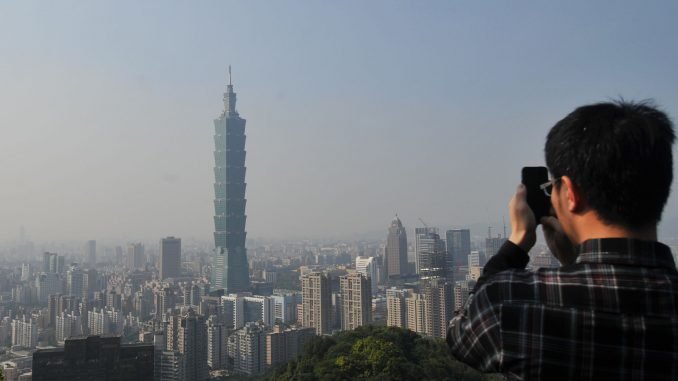
Taiwan’s defence industry (DI) can develop modern armaments that can deter a potential opponent and is even aiming to export them globally. The case study of Taiwan’s DI provides another argument on the need to start a broader discussion: firstly, on how indigenous DI can contribute to the national security of Lithuania, and secondly, what are possible DI‘s development directions and priorities.
Taiwan, its Armed Forces, and armaments used
The territory of the state of Taiwan is almost twice as small as Lithuania, but Taiwan has a population of more than 23 million and ranks 13th in the world in terms of GDP per capita. Taiwan is considered one of the most advanced industrialized countries in the world, specializing in the production of various electronic devices, industrial equipment, and consumer goods.
There are 165,000 active soldiers serving in the Taiwanese Armed Forces. Annual Budget for the Force for 2020 was $ 13.1 billion, or 2.3% of the state’s GDP. The main armaments of Taiwan’s Ground Forces include locally upgraded U.S.-made armaments, locally produced armaments and small arms, and procured from the U.S. tanks, self-propelled howitzers, and short-range air defence systems.

The Taiwanese Navy is equipped with ships manufactured in the U.S, France, and submarines made in the Netherlands. Few warships are manufactured in Taiwan independently or under the licenses. Ships are armed with armaments supplied by the U.S. or manufactured locally. The Taiwan Air Force is equipped with U.S.-made combat and training fighters, transport planes, and helicopters. The Air Force also has French-made fighter jets, helicopters, and locally made combat and training fighter jets. Aircrafts are armed with missiles imported from the U.S., France and manufactured locally.
The potential of Taiwan’s DI
Much of the attention is being paid to building the capacity of the local DI in order to ensure self-defence. To this end, the R&D budget is constantly increasing, not only to develop advanced technologies and armaments but also to train professionals capable of developing dual-use technologies. The development of the domestic DI is supported, together with the idea to explore offsets. The aim is to ensure the involvement of the local DI in the global armaments supply chains.
Taiwan’s DI companies provide work for the country’s citizens, the competencies of the companies are deepened and expanded, and the state can obtain important weapons and ammunition on its own. The Taiwanese government has set guidelines for the Defense Industrial Policy, which set out the following priorities: shipbuilding, aviation, and information security. State aims also to procure up to 60% of arms manufactured locally.
Taiwan’s DI is made up of over two hundred companies. The backbone of the industry is the National Chung-Shan Science and Technology Institute, the Taiwan Aerospace Industry Development Corporation (TWAIDC) and several shipyards.
The Chung-Shan National Institute of Science and Technology develops, manufactures, and maintains a variety of weapon systems and dual-use technologies throughout their life cycle. The institute is directly managed by the state. The institute runs more than 39 programs, focusing on the production of anti-aircraft, air-to-air missiles, and the production of a newer model fighter, including an engine. The institute develops and manufactures autonomous submarines, several types of unmanned aerial vehicle systems, including aircraft kamikazes, radio stations, long-range and medium-range radars.
TWAIDC accounts for over 60% of Taiwan’s total aerospace production. TWAIDC, together with local and U.S. manufacturers, has developed two types of trainers and jet fighters. TWAIDC has also signed a strategic partnership with the U.S. based Lockheed Martin for the development of regional F-16 fighter maintenance, repair, and overhaul centre in Taiwan. TWAIDC is licensed by Lockheed Martin to manufacture 23 component’s types suitable for F-16 fighters. TWAIDC shares are listed in a stock exchange and a 39% stake is held by the Taiwanese government.
For the interest, as many as 10 local companies currently provide components and equipment to Space X. Taiwan is also seeking to enter the global aerospace market, focusing on the development of low earth orbit satellites.
Other aspects
Support for the Taiwanese Armed Forces is currently being discussed in the U.S. Congress. It is anticipated, the U.S. would allocate up to $ 2 billion annually for this purpose.
Critics note that the main arms supplier remains the U.S. as other major countries do not supply arms. In this way, U.S. suppliers can offer higher armaments prices because Taiwan’s still-evolving DI cannot offer an alternative option.
DI companies are encouraged to invest in R&D, as tax incentives are provided for this purpose.
What can we learn?
Even a small state can develop selected defence systems.
Stable financing of the defence sector and the government’s commitment to purchase up to 60% of armaments from local manufacturers ensure the consistent development of the national DI.
The desire of the Taiwanese national DI to open can be successfully exploited by Lithuanian manufacturers while jointly developing armaments or their components, or simply selling Lithuanian technologies.
The priorities for the development of armaments locally should be clearly defined.
Taiwan’s ambitions to become the U.S. arms MRO centre can be an example for Lithuania to go.
Major national DI companies must be state-owned.
When purchasing armaments from foreign manufacturers, it is necessary to create a competitive environment to choose the desired system at the best market price.
Author. Major Donatas Palavenis, Junior researcher in the Baltic Institute of Advanced Technology (BPTI).

Be the first to comment